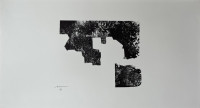Eduardo Chillida
Eduardo Chillida (Spain, 1924–2002) was a visionary sculptor renowned for his monumental works in steel, stone, and concrete. Inspired by space, landscape, and philosophy, his abstract forms explore tension and balance. Chillida’s iconic public sculptures, including The Comb of the Wind, have made him a key figure in modern sculpture.
- Recently Added
- Price (Low-High)
- Price (High-Low)
- Year (Low-High)
- Year (High-Low)
Eduardo Chillida
Literature Or Life (Esku XXXV, Hebrew Version), 1997
Limited Edition Print
Etching
EUR 3,600
Eduardo Chillida
Une Helene De Vent Ou Fumee I, 1990
Limited Edition Print
Etching And Aquatint
EUR 8,150
Eduardo Chillida
Une Helene De Vent Ou Fumee II, 1990
Limited Edition Print
Etching And Aquatint
EUR 8,150
Eduardo Chillida
Une Helene De Vent Ou Fumee III, 1990
Limited Edition Print
Etching And Aquatint
EUR 8,150

What is abstract art?
Abstract art uses form, shape, line, and color to create a visual experience without attempting to represent external reality. The composition exists independently of the world's visual references, focusing on expressing ideas and emotions through non-representational means.


















































